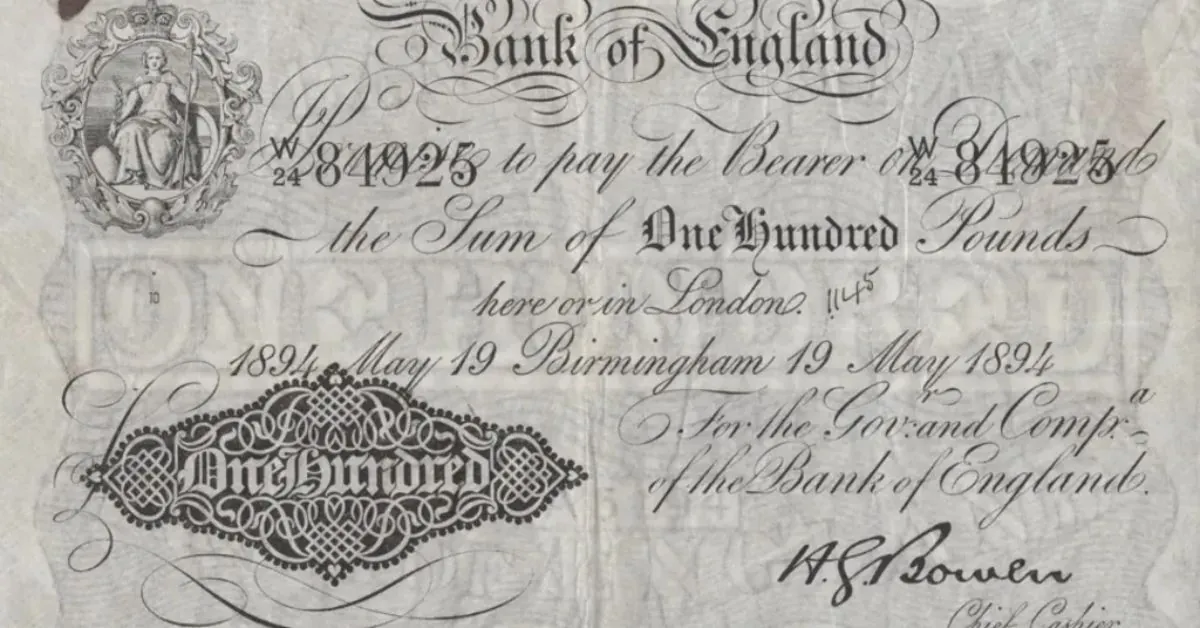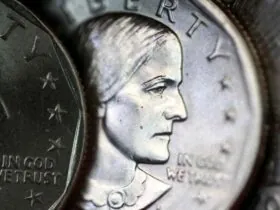A remarkable piece of financial history recently made waves at an auction in Mayfair, London. A 130-year-old banknote, issued by the Birmingham branch of the Bank of England, has sold for an impressive £38,000. This extraordinary sale highlights the enduring fascination collectors have with rare and historically significant currency.
A Glimpse Into the Past
This Article Includes
Dated May 1894, the banknote is a £100 denomination signed by Horace G. Bowen, who served as the Bank of England’s chief cashier from 1893 to 1902. This particular note carries a unique appeal for collectors due to its rarity, historical value, and pristine condition. Its Birmingham origin adds another layer of intrigue, as it represents a piece of the city’s financial heritage during the Victorian era.
Why Was This Note So Special?
The auction house, Noonans Mayfair, described the note as “very rare.” Andrew Pattison, a representative of the firm, explained its desirability:
“It is just such a rare note, with the magic combination of Bowen’s signature, £100 denomination, and Birmingham issue location – and the condition was wonderful.”
Adding to its allure, the note is one of only two surviving examples of Horace Bowen’s signed notes above £5 issued outside London. Such scarcity makes it a prized possession for collectors.
Exceeding Expectations
Initially estimated to sell for between £24,000 and £30,000, the note surpassed all expectations, achieving £38,000. The winning bidder, described as a passionate collector of rare UK notes, expressed delight at acquiring this exceptional piece.
Birmingham’s Bank of England Legacy
The note also sheds light on Birmingham’s connection to the Bank of England, which operated a branch in the city from 1827. Over the years, the branch moved locations three times before its eventual closure in 1997. The banknote serves as a tangible reminder of this legacy and the city’s historical role in Britain’s financial system.
A Record-Breaking Auction
This wasn’t the only noteworthy sale at the auction. Another rare banknote, a £500 denomination from October 1929, sold for £36,000. Signed by Basil G. Catterns, chief cashier from 1929 to 1934, it remains the only surviving £500 note bearing his signature.
Collecting History
The sale of these extraordinary banknotes underscores the growing interest in preserving financial artifacts. Each note tells a story, not just of monetary value, but of the history, craftsmanship, and lives they touched. For collectors, these items offer a direct link to the past, combining art, history, and the thrill of ownership.
The record-breaking prices achieved at this auction affirm the enduring appeal of rare and historic banknotes. As more collectors seek out these treasures, the market for such items continues to thrive.







Leave a Reply